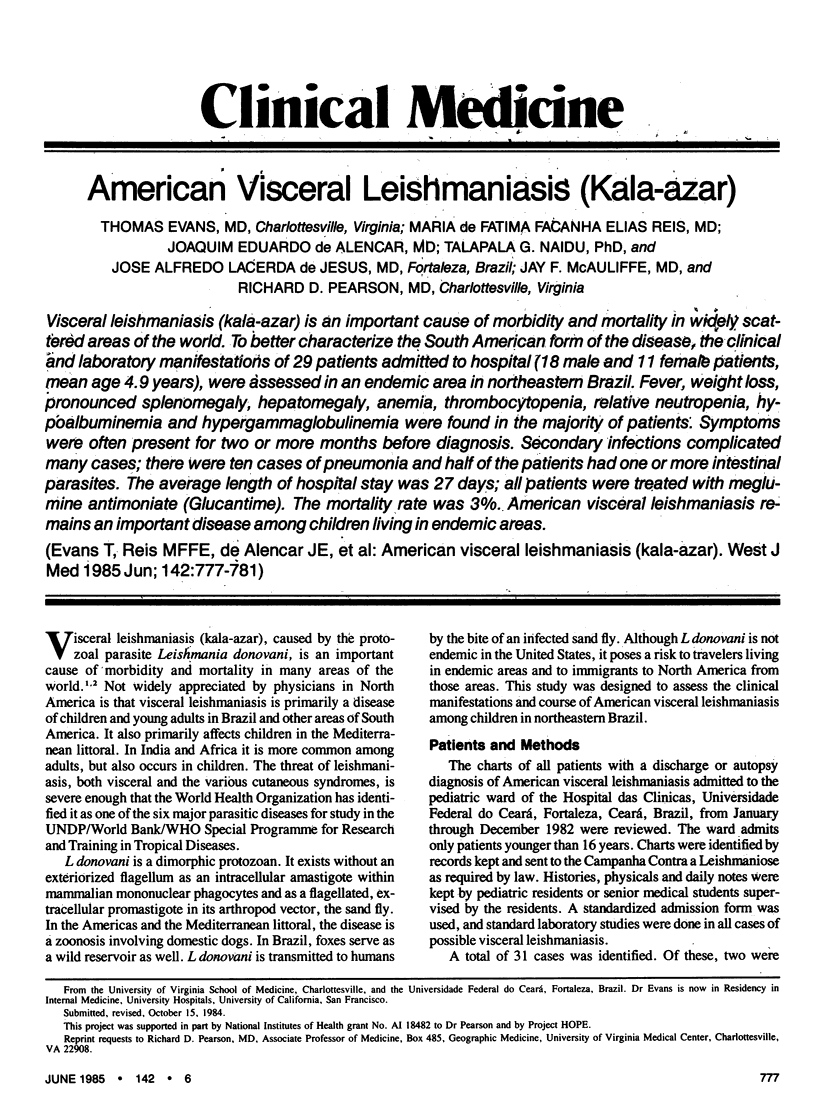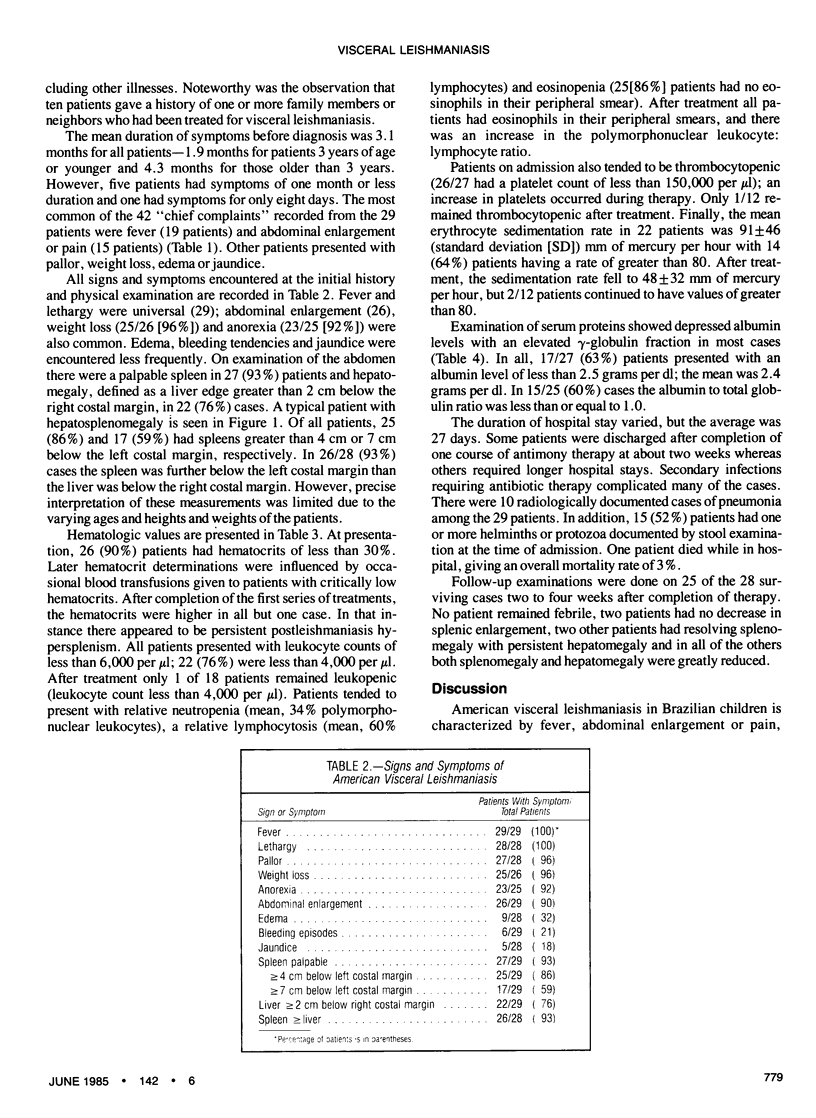Abstract
Visceral leishmaniasis (kala-azar) is an important cause of morbidity and mortality in widely scattered areas of the world. To better characterize the South American form of the disease, the clinical and laboratory manifestations of 29 patients admitted to hospital (18 male and 11 female patients, mean age 4.9 years), were assessed in an endemic area in northeastern Brazil. Fever, weight loss, pronounced splenomegaly, hepatomegaly, anemia, thrombocytopenia, relative neutropenia, hypoalbuminemia and hypergammaglobulinemia were found in the majority of patients. Symptoms were often present for two or more months before diagnosis. Secondary infections complicated many cases; there were ten cases of pneumonia and half of the patients had one or more intestinal parasites. The average length of hospital stay was 27 days; all patients were treated with meglumine antimoniate (Glucantime). The mortality rate was 3%. American visceral leishmaniasis remains an important disease among children living in endemic areas.
Full text
PDF




Images in this article
Selected References
These references are in PubMed. This may not be the complete list of references from this article.
- Anabwani G. M., Ngira J. A., Dimiti G., Bryceson A. D. Comparison of two dosage schedules of sodium stibogluconate in the treatment of visceral leishmaniasis in Kenya. Lancet. 1983 Jan 29;1(8318):210–213. doi: 10.1016/s0140-6736(83)92588-6. [DOI] [PubMed] [Google Scholar]
- Badaró R., Reed S. G., Carvalho E. M. Immunofluorescent antibody test in American visceral leishmaniasis: sensitivity and specificity of different morphological forms of two Leishmania species. Am J Trop Med Hyg. 1983 May;32(3):480–484. doi: 10.4269/ajtmh.1983.32.480. [DOI] [PubMed] [Google Scholar]
- Chulay J. D., Bhatt S. M., Muigai R., Ho M., Gachihi G., Were J. B., Chunge C., Bryceson A. D. A comparison of three dosage regimens of sodium stibogluconate in the treatment of visceral leishmaniasis in Kenya. J Infect Dis. 1983 Jul;148(1):148–155. doi: 10.1093/infdis/148.1.148. [DOI] [PubMed] [Google Scholar]
- Chulay J. D., Bryceson A. D. Quantitation of amastigotes of Leishmania donovani in smears of splenic aspirates from patients with visceral leishmaniasis. Am J Trop Med Hyg. 1983 May;32(3):475–479. doi: 10.4269/ajtmh.1983.32.475. [DOI] [PubMed] [Google Scholar]
- Hockmeyer W. T., Kager P. A., Rees P. H., Hendricks L. D. The culture of Leishmania donovani in Schneider's insect medium: its value in the diagnosis and management of patients with visceral leishmaniasis. Trans R Soc Trop Med Hyg. 1981;75(6):861–863. doi: 10.1016/0035-9203(81)90433-8. [DOI] [PubMed] [Google Scholar]
- Knight R., Woodruff A. W., Pettitt L. E. The mechanism of anaemia in kala-azar. A study of 2 patients. Trans R Soc Trop Med Hyg. 1967;61(5):701–705. doi: 10.1016/0035-9203(67)90136-8. [DOI] [PubMed] [Google Scholar]
- Musumeci S., D'Agata A., Schiliro G., Fischer A. Studies of the neutropenia in kala-azar: results in two patients. Trans R Soc Trop Med Hyg. 1976;70(5-6):500–503. doi: 10.1016/0035-9203(76)90137-1. [DOI] [PubMed] [Google Scholar]
- Woodruff A. W., Topley E., Knight R., Downie C. G. The anaemia of kala-azar. Br J Haematol. 1972 Mar;22(3):319–329. doi: 10.1111/j.1365-2141.1972.tb05678.x. [DOI] [PubMed] [Google Scholar]



